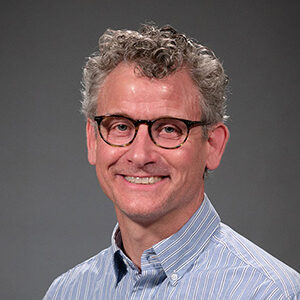
By Adam Peterson, ’25 Journalism, IUPUI
Imperfections across the health care system have long plagued the United States. Costs are high, rules are unclear, coverage is spotty and in flux. IUPUI professor David Craig is working to improve the situation.
Ten years ago, Craig wrote a book on health care, enthusiastically hoping that the book would help move the needle on a national level reform. But that needle was too mighty to be moved with a wad of bound paper. This caused a shift in focus to the local level, where Craig is now working with religious communities in Indianapolis to foster a better understanding of health and wellness.
A Partnership to Promote Wellness
Local religious communities are vital to Craig’s efforts. Community partnerships come with built-in infrastructure for connection. Religious leaders have earned the trust of their congregations and their vote of confidence in Craig has been monumental in overcoming natural skepticism, particularly in communities who have been historically distrustful of the health care system and university researchers.
Herron professor Pamela Napier and Craig received the 2020-2021 Charles R. Bantz Community Fellowship to support this community-university health collaboration. Craig has enlisted the aid of the students in his Religion, Health, and Ethics course at IUPUI, in collaboration with Napier’s students from the Herron School of Art, to help aid and learn from the religious communities. After discussions with local leaders, the students create posters that help promote health and wellness to the congregation. Craig calls this relational research.
 “You learn in a deeper way with people, not from people,” Craig says. “It’s not just going in and taking what they know, it’s learning alongside them. And, in some senses, allowing them to learn things about themselves.”
“You learn in a deeper way with people, not from people,” Craig says. “It’s not just going in and taking what they know, it’s learning alongside them. And, in some senses, allowing them to learn things about themselves.”
Fostering wellness is at the core of this relationship. Craig wishes to expand the idea of well-being beyond health, beyond one’s physical condition to also include one’s mental, emotional, and environmental conditions.
“Health is usually understood to be not having something wrong with you,” Craig says. “But wellness is positive. Wellness is a sense of wholeness.”
The challenge for Craig is that wholeness means different things to different people. That is where his students and their relational research come in. Split into groups, the students virtually journeyed out to several houses of worship in the Indianapolis area to learn what wellness meant to them and how to best serve their needs
Dayra Sanchez, a student at IUPUI, took Craig’s course in the spring of 2021. She describes the experience as a powerful one.
“I learned a lot about the power of narrative and how engagement with the participants introduces a very rich and nuanced dimension to the knowledge we got back,” Sanchez says. “Health, to me, is very personal, and I’ve always understood faith to be very personal, too. It was a powerful experience to listen and learn about how those things connected for our participants.”
The local religious leaders were impressed by and quite thankful to have the students’ final products.
“This is beautiful. My mind is blown,” one told Craig. “I can’t wait to share (this poster) with the leadership team.”
Get H.I.P., Stay H.I.P.
Craig and Napier’s efforts expand beyond religious communities. They also advocate for growing public knowledge about Indiana’s Medicaid expansion program: the Healthy Indiana Plan. HIP serves adults from age 18 to 64 who make less than a certain amount every month, depending on the size of the household.
In 2020, Indiana was one of many states that relaxed its Medicaid enrollment rules to help struggling residents get by, according to Craig. The rules are reverting back to their pre-pandemic form likely this fall, which Craig says many enrollees are unprepared for.
“Total enrollment in HIP increased 75% during the public health emergency. Enrollment in HIP Plus more than doubled,” Craig says. “So you’re gonna have 700,000 people hit with rules they may never have experienced before or they may have forgotten. And if they don’t follow the rules, they’re gonna lose coverage.”
According to Craig, the state’s website does not provide easy access to information about HIP. Through the creation of brochures, he is trying to publicize the fact that all enrollees in HIP need to have their mailing addresses up-to-date so the state can send them the needed documentation. Otherwise, they will lose their benefits.
HIP Plus is “a great program if you can make those monthly premium payments,” Craig says.
Those monthly premium payments are not massive but still challenging on very tight budgets. They range from $1-20 and can be paid by someone else on behalf of the enrollee. Not paying means losing vision and dental coverage or possibly health coverage depending on one’s income.
The Path Forward
Craig wants to continue and expand this work going forward. He points to the Congregational Health Network in Memphis, Tennessee, as inspiration for his next goal: developing an interfaith health network in Indianapolis.
The Memphis network is a partnership between 600 congregations of Christian, Muslim, and Jewish faith who, according to Craig, “who work together to support health in their neighborhoods and advocate for better health policy.”
“I think it would be incredible to have a similar health network here in Indianapolis,” Craig says.
In a world that seems defined by division, Craig finds strength in collaboration and a focus on the things we all have in common to work together for a brighter, more well tomorrow.

